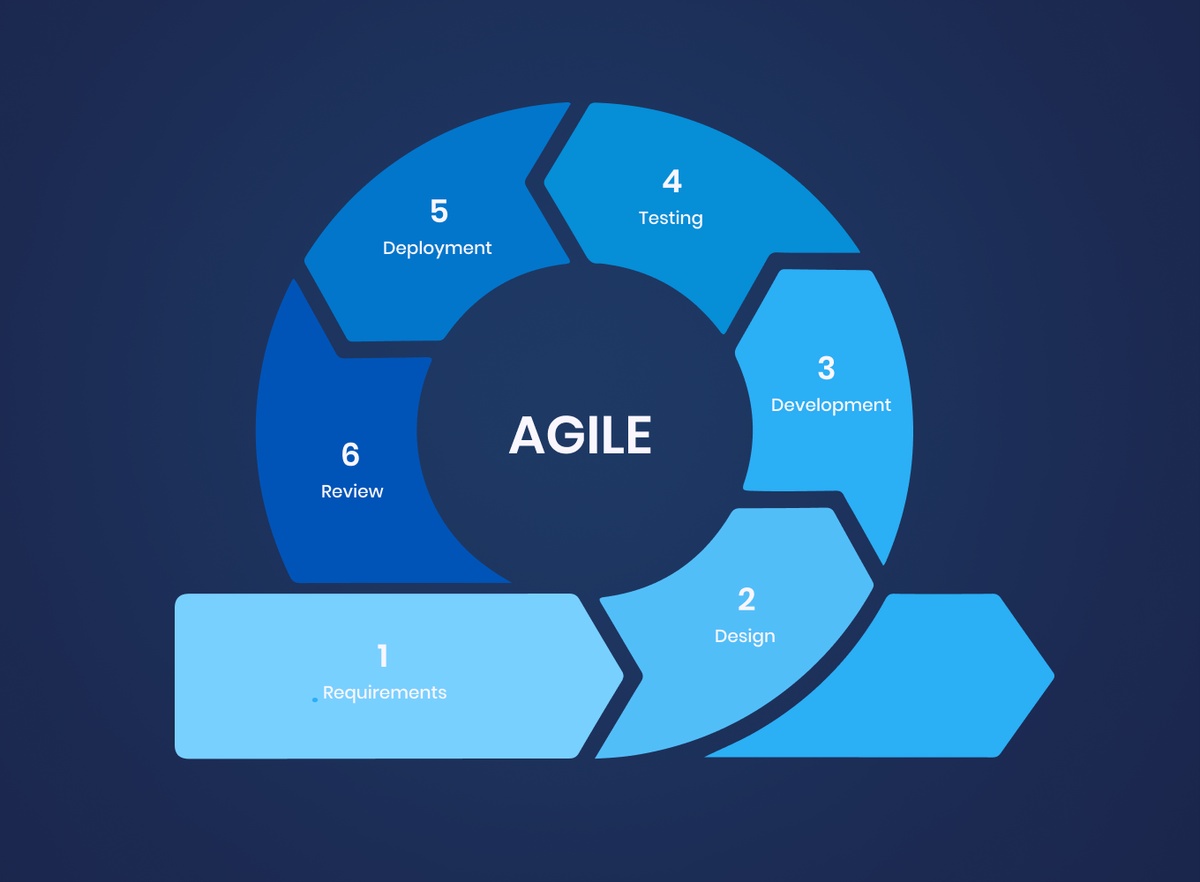The world of software development embraces Agile Project Management as a key approach. It adapts to changes and delivers customer value efficiently. As technology and customer needs evolve rapidly, Agile principles offer flexibility and responsiveness. This blog explores the Agile mindset, its key principles, practices, and crucial role in software development management.
Understanding the Agile Mindset
Agile's core mindset differs radically from traditional project management approaches. Rooted in the Agile Manifesto, it prioritizes flexibility, collaboration, and customer satisfaction. Its values champion human interactions, iterative development, and adaptability. Teams adopting Agile foster open communication, actively seek feedback, and view adaptation as strength, not setback. This cultural shift empowers teams to tackle complexity in manageable segments, enabling frequent reassessments and adjustments. The Agile mindset requires deep belief in advocated principles, encouraging continuous improvement, responsibility, and cohesion. It creates a space where innovation thrives through collaboration and openness to change, allowing development projects to flourish.
Key Principles of Agile Project Management
The twelve core principles of Agile Project Management offer actionable guidelines. These stem from the Agile Manifesto. The principles guide teams to achieve goals flexibly and efficiently. They advocate early, continuous delivery of valuable outcomes. This ensures customer satisfaction. The principles highlight embracing changing requirements, even late in development. Teams prioritize frequent delivery of functional software. They foster sustainable development environments. Individuals can maintain steady work paces. Key is promoting face-to-face interactions for efficient, effective team communication. The principles emphasize pursuing technical excellence. They simplify work by focusing on essentials. Regular reflections enhance practices, productivity, and effectiveness. Following these principles, Agile teams navigate development challenges collaboratively. They focus on quality and adaptability. This ensures exceptional customer value delivery.
Good To Read:- Agile Software Development A Detailed Guide for 2024
The Role of Scrum in Agile Development
Scrum is a foundational Agile project management framework. It provides structured yet adaptable methods for product development. Work is organized into defined sprints - timed intervals for specific tasks. Scrum ensures disciplined project completion while retaining essential Agile flexibility. Roles are clear: the Product Owner defines goals, prioritizes tasks; the Scrum Master facilitates, addresses obstacles; the Development Team executes tasks. Key ceremonies like sprint planning, daily stand-ups, reviews, retrospectives enhance collaboration. They enable real-time adjustments, foster continuous improvement. These elements work together, aligning projects with customer needs. The team's workflow stays efficient, adaptable. Embedding structured Scrum practices within Agile reinforces flexibility, rapid iteration, customer focus principles. Scrum streamlines processes while upholding core Agile tenets.
Key Agile Practices for Development Teams
To streamline work and align with the Agile methodology, development teams should integrate vital practices. Continuous Integration (CI) and Continuous Delivery (CD) let teams frequently merge code copies to a shared mainline and automatically release code to production environments. The codebase stays deployable, reducing integration issues and enabling rapid releases. Test-Driven Development (TDD) is essential too. Teams write failing tests for new features or bug fixes first, then develop code to pass these tests, and refactor code to meet standards, ensuring quality. Pair programming, where two programmers work together at one workstation, boosts code quality and knowledge sharing. User Story Mapping provides a visual scope and progress representation, helping teams understand customer needs and prioritize tasks effectively. Embracing these practices improves productivity, product quality, and customer feedback responsiveness, aligning with Agile's early and frequent value delivery commitment.
Must Read:- Game Changing Top Web Design Trends in 2024
Overcoming Agile Development Hurdles
Moving to Agile often surfaces challenges impeding teams' transition and progress. Resistance from members accustomed to traditional methods can significantly hamper Agile adoption. This resistance usually stems from fear of the unknown and comfort with established routines. To address this, fostering an environment valuing openness and continuous learning is crucial. Teams should engage in regular training sessions and workshops demystifying Agile principles and encouraging hands-on experience.
Adopting new roles is one challenge in Agile methods. Roles like Scrum Master or Product Owner require clear understanding. Without acceptance, teams face accountability and ownership issues. Everyone understanding their part's importance is crucial.
Delivering quality outputs rapidly is another challenge. Teams must integrate testing and quality assurance practices throughout. This prevents last-minute rushes that compromise the product. Each increment receives thorough vetting before delivery. Addressing such challenges directly smooths Agile adoption. Teams can then fully utilize its dynamic, efficient project management potential.
Agile Metrics and Tools for Success
Agile metrics and tools guide teams precisely and efficiently. Sprint burndown charts visually show completed versus remaining work, painting sprint progress clearly. Velocity tracks a team's sprint work capacity for future planning. Lead and cycle times assess efficiency by measuring task duration, identifying bottlenecks. Complementing metrics, tools facilitate processes. JIRA robustly manages workflows for project tracking. Trello's intuitive board layout excels in visual task organization and prioritization. Asana comprehensively assigns tasks, aligning teams. Leveraging these drives visibility, streamlines workflows, fosters continuous improvement and collaboration.
Don't Miss Out! Get a Free Consultation with a Top Software Product Development Company in India
Agile in Large Organizations and Distributed Teams
Agile approaches need tailoring for larger firms and dispersed crews. Huge entities weave SAFe (Scaled Agile Framework) or comparable designs to roll out Agile at scale. The key test? Maintaining Agile's adaptability and quick iterations at scale. All organization layers must gel into an Agile culture with cohesive, enterprise-wide adoption. Effective communication and unified Agile goals drive success.
Scattered teams grapple with distance and time zones. Digital collaboration tools bridge gaps to uphold Agile's close interaction. Platforms like Slack (instant messaging), Zoom (face-to-face meets), and GitHub (code sharing/review) mesh workflows across locations. Virtual Agile rituals and clear, constant communication sync distributed efforts. Physical separation doesn't impede agileness.
Wrapping up
Agile Project Management adoption in development fosters dynamic, efficient, customer-centric project execution. Agile principles and tailored practices empower teams to navigate complexities agilely across industries. This mindset spurs productivity, quality, and customer satisfaction. Though challenging, embracing Agile reaps rewards: enhanced collaboration, adaptability, and continuous improvement. As digitization advances, Agile remains pivotal, guiding projects to exceptional value delivery in an ever-evolving landscape.


No comments yet